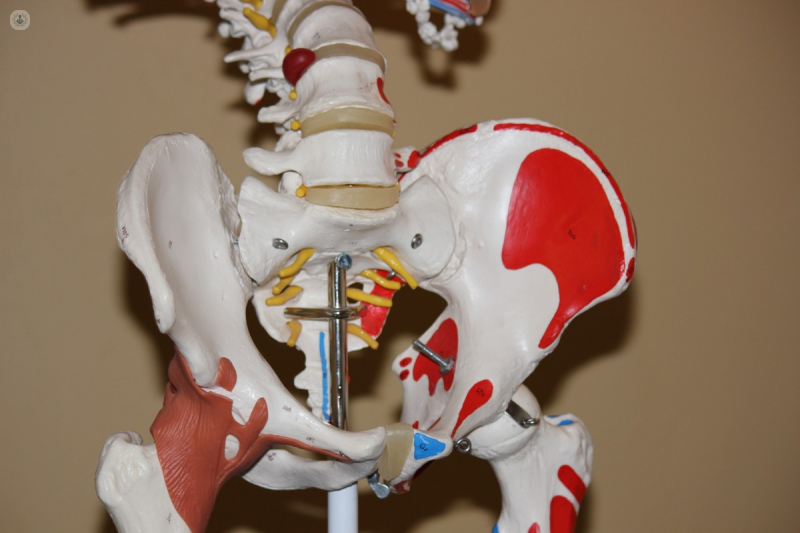

What is it?
Hip arthroscopy is a minimally invasive surgical technique used to diagnose and treat issues in the joint via small skin incisions, less than a centimetre big each.

The procedure is done under general anaesthetic and lasts about 90 minutes. The duration will depend upon the type of issue being had and the treatment being carried out.
Why would you do it?
This kind of arthroscopy is used to diagnose:
- Pain issues or hip blockages
- Intra-articular loose body removal
- Labrum tears (femoral head stabilising cartilage)
- Femoroacetabular shock (excessive hip movement friction).
What does it involve?
During the procedure, the leg is gently pulled to make space for the procedure. The surgeon will mark where the incisions should be made, these are known as arthroscopic portals. Two or three incisions smaller than 1 cm are normally made. The arthroscope is inserted through one of the incisions and the surgical tools are inserted in the other.
How to prepare for it
For two weeks before surgery, the specialist may ask you to take anticoagulant medications. The specialist should know if the patient is consuming alcohol and using tobacco, as smoking is known to delay wound and bone healing.
Post-operative care
After surgery, it is normal for the patient to feel some discomfort, have some oedema, and a numb pubis for a few hours or longer. After a week to ten days, normal daily activities are allowed, according to discomfort felt, and relative rest.
After around 5-7 days, a check-up will be done and physiotherapy treatment will be recommended. The physiotherapists will create a personalised treatment plan.
During the first two weeks, the aims will be to:
- Mobilise the joint to prevent adhesions
- Decrease inflammation and pain
- Avoid muscle atrophy.
It is also important to follow these tips:
- Do not force hips to bend more than 90 degrees
- Use crutches to distribute weight
- Do not force rotation
- Change positions every hour (sit down / stretch)
- Do the exercises recommend by the specialists.
Alternative treatments
This is the most up-to-date treatment available for hip issues. Hip replacement has been the traditional treatment used for hip osteoarthritis, rheumatoid arthritis, or hip fractures.
